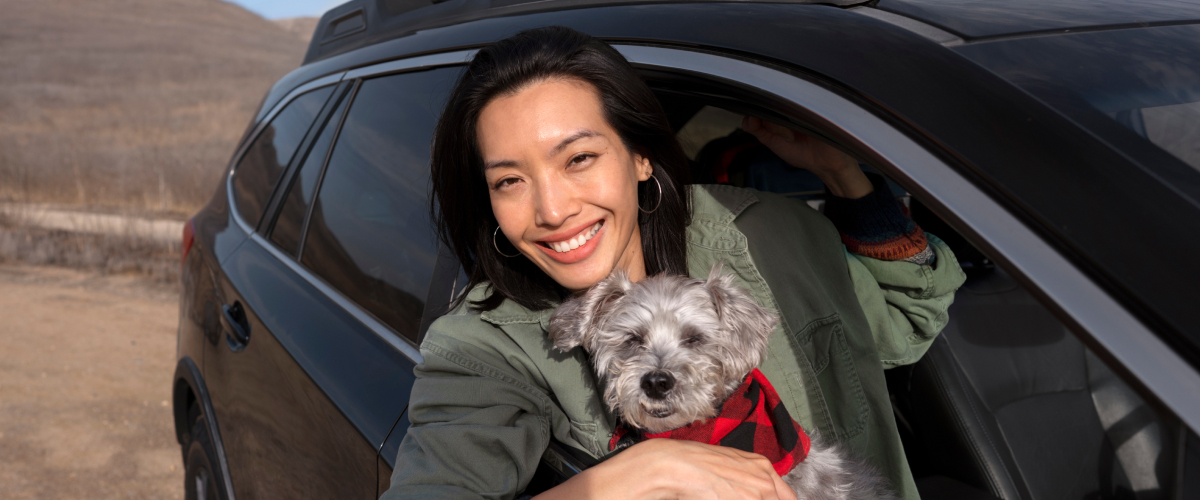Ensuring safe car trips with senior pets involves special considerations to accommodate their age-related needs and potential health issues. Here are tips to make car travel safer and more comfortable for your senior companion:
Consult Your Vet Before Long Trips: Before embarking on long car journeys, consult with your veterinarian. It’s crucial to discuss your pet’s health condition and any special needs they may have. Your vet might also recommend medications for motion sickness, anxiety, or other relevant conditions.
Frequent Breaks: Senior pets may need more frequent stops for bathroom breaks and to stretch their legs. Plan your route to include rest stops every 1-2 hours. This will help prevent discomfort and potential urinary tract issues. During breaks, offer water to keep them hydrated and use a leash for safety.
Comfortable Restraint Systems: Use a pet seat belt, carrier, or vehicle pet barrier that is appropriate for your pet’s size and health. Ensure that carriers are well-ventilated and secure. A comfortable restraint system not only keeps your pet safe in case of sudden stops but also reduces their anxiety.
Comfortable Bedding: Equip their carrier or seat with soft, comfortable bedding to cushion their joints. Senior pets, especially those with arthritis, will appreciate the extra support during the journey. Consider orthopedic pet beds designed for joint support.
Climate Control: Maintain a comfortable temperature in the vehicle, especially for pets with thick fur or those prone to overheating. Similarly, ensure they are warm enough, as older pets may struggle to regulate their body temperature. Never leave your pet alone in the car, as temperatures can quickly become extreme.
Accessible Water and Snacks: Keep water and healthy snacks accessible for your pet. Hydration is important, especially for senior pets. Use a spill-proof bowl for water, and offer small amounts of food and water during breaks to avoid gastrointestinal upset.
Prepare for Emergencies: Have a pet first-aid kit on hand, and know the locations of veterinary hospitals along your route. Include your pet’s medical records, especially if they have ongoing health issues. It’s also a good idea to have your pet microchipped and wearing a collar with up-to-date contact information in case they get lost.
Familiarity and Reassurance: Bring along your pet’s favorite toys, blankets, or anything else that smells like home to provide comfort and reduce stress. Speak to them in a calm and reassuring manner throughout the trip to help them stay relaxed.
Adapt Your Schedule: Recognize that your senior pet may not be able to handle long periods of travel as well as they once could. Be prepared to adjust your travel plans, including making the decision to cut trips short if your pet appears to be in distress or discomfort.
Health Monitoring: Keep a close eye on your pet’s behavior and physical condition throughout the trip. Look out for signs of stress, discomfort, or illness, and be ready to adjust your plans if necessary to ensure their well-being.
By taking these steps, you can make car travel safer and more enjoyable for your senior pet, ensuring that you both arrive at your destination comfortably and stress-free.

